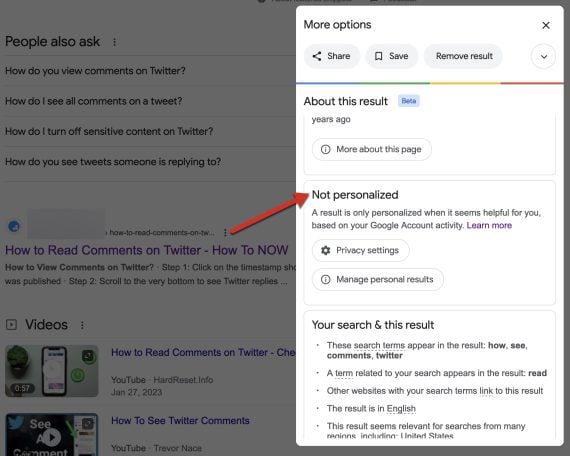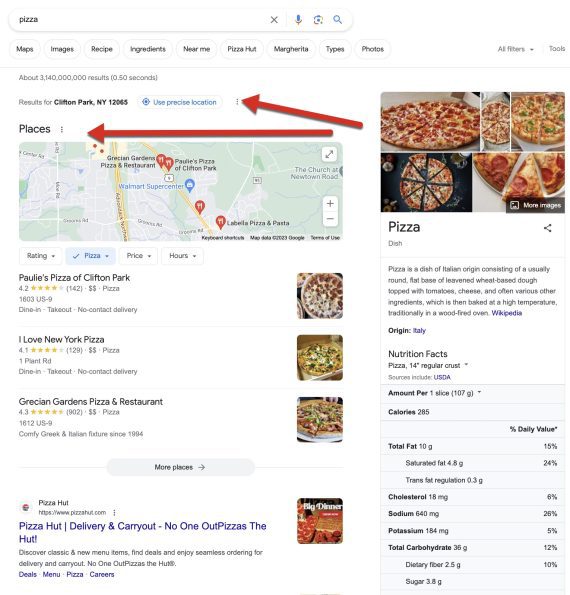Search results on Google vary among users. The results are personalized based on a user’s:
- Search history,
- Interactions (clicks on organic or paid listings),
- Location,
- Browser settings, such as language.
All of these affect rankings and thus your company’s exposure to customers and prospects.
Personalized Search Results
Search History
A user’s previous searches help Google understand that person’s intent and context behind a query. Personalizing by search history typically functions within a single session — entering words in Google’s search box without interruptions.
A simple way to experience this type of personalization is via two hypothetical queries. First, search for “cheesecake.” Then, while remaining on the page, search for “how to make.” Google will (usually) include “how to make cheesecake” in its suggestions.

Google suggests “how to make cheesecake” in a “how to make” search if a previous query included “cheesecake.” Click image to enlarge.
However, searching “how to make” in a new tab using Chrome’s Incognito mode often loses that context, prompting Google to suggest generally popular results.
I know of no way to turn off history-based personalization other than Incognito mode. So keep it in mind when searching Google, as your prospects may see different results.
Nonetheless, search Google for your main keywords and related words to see how personalized autocomplete could appear for your audience.
Note that Google could personalize results beyond a single session for users who allow Google to retain their search history.
Interactions
Google may serve personalized results based on clicks to organic listings, ads, or liked Discover results. Searchers know they are seeing personalized results if Google includes a note next to previously visited sites.
Searchers can turn off this type of personalization by (i) clicking the three dots next to those results and adjusting the settings accordingly, (ii) logging out of Google, or (iii) using incognito mode when searching.

Turn off interaction-based personalization by clicking the three dots and adjusting the settings. Click image to enlarge.
Location
Google will personalize search results based on the searcher’s location if it suspects the query involves a local business. Search for “pizza” to see this type of personalization.
Location-based personalization is IP-based and remains in effect whether logged out of Google or using incognito mode. To alter your location, try a browser-based app such as GS Location Changer.
Browser Language Settings
Google will force search results in the language selected in the searcher’s browser settings or Google account. There’s no way to remove this personalization.
Optimizing for Personalization
Google gives searchers only partial control of search personalization. Many are not aware of personalization settings. Thus assume your target customers see slightly different results than you. Keep that in mind when tracking rankings.
To optimize your site’s chances of appearing in personalized results:
- Entice returning visitors (through retargeting ads)
- Plan your organic search strategy around multiple buying journeys, such as queries for information, how-to, and “what is.”
- Create content for visibility in Google Discover, such as niche trends.





